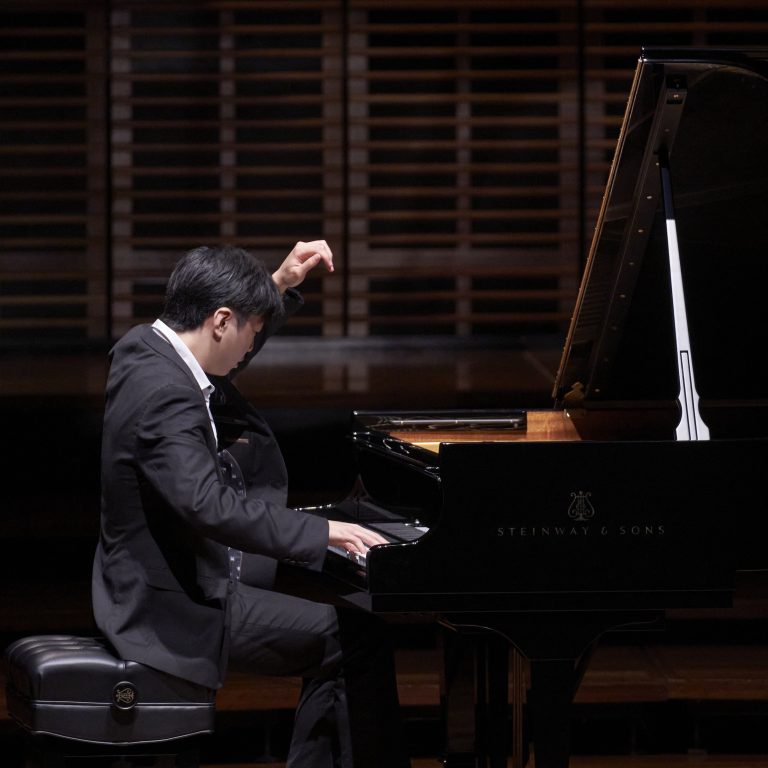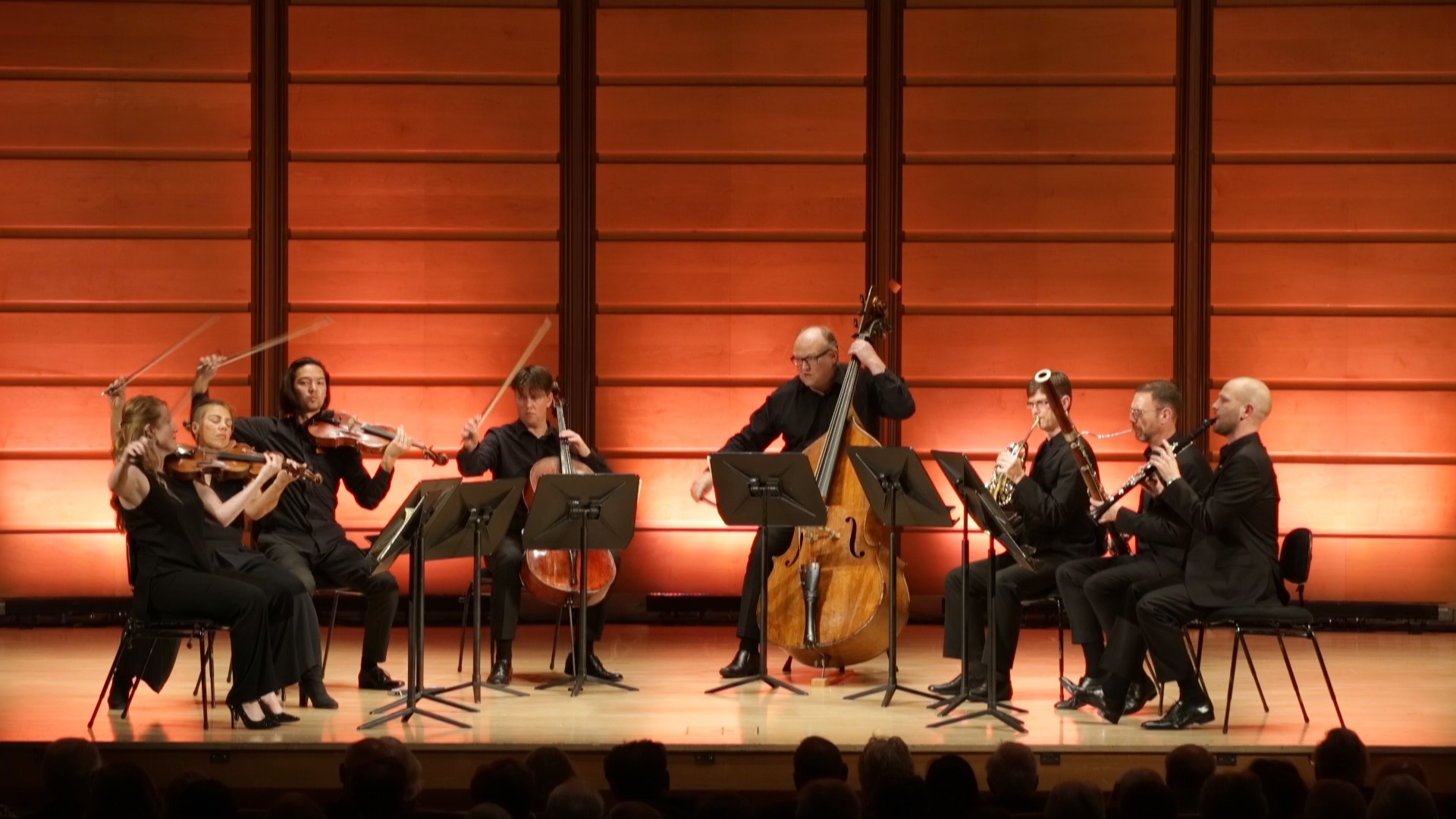Concert Review: Beethoven’s Fifth/Australian Haydn Ensemble
Concert Review: Beethoven’s Fifth/ Australian Haydn Ensemble
City Recital Hall, Sydney and Australian Digital Concert Hall
30 June, 2024
Image Oliver Miller
The Australian Haydn Ensemble completed its New South Wales and ACT tour of its Beethoven’s Fifth program in Sydney on a jubilant high with a compelling performance at Sydney’s City Recital Hall, broadcast on Australian Digital Concert Hall.
Artistic Director Skye McIntosh led an ensemble of six other musicians, comprising second violinist Matthew Greco, violists Karina Schmitz and Nicole Divall, cellist Daniel Yeadon, double bassist Pippa Macmillan and flautist Jessica Lee in an exploration of music from the late 18th and early 19th centuries.
Luigi Boccherini’s String Quintet in C major, opus 30 No. 6 has the popular title Night Music of the Streets of Madrid. It is an entertaining example of an emerging Romantic era trend of ‘program music’ where instrumental music was written to depict something outside the boundaries of music, like nature, legend, a scene or a literary idea. Although we know him mainly and unfairly for his delicate Minuet, Boccherini was an accomplished composer and innovator for bowed, stringed instruments as well for the guitar. This string quintet has some fun with the music as the five players, McIntosh, Greco, Schmitz, Macmillan and Yeadon strum, pluck and bow the seven short movements, depicting the nightscape on the street of Madrid from church bell and an incongruously graceful minuet for blind beggars, to McIntosh’s insistent middle C representing The Soldier’s Drum, the chorale-like Rosary, impressive bariolage from Greco in the Passacalle and the majesty of a grand march in The Retreat.
Ferdinand Ries’ was a student and friend of Beethoven. In any other era, his symphonies would have shone, but in the shadow of Beethoven’s orchestral writing, Ries’ compositions seem rather pale. His own arrangement of his three-movement Symphony No. 3 in E flat major is a charming miniature piece played by the full ensemble of seven. It is full of bold harmonies. The contrast of the flute as the sole non-stringed instrument emerging through the texture of the stringed instruments piques the interest. Of interest as a musician of the time and as an arranger of larger works, even some of Beethoven’s pieces, approved by Beethoven, Ries deserves a place in history and is worthy of being performed and heard.
Whether Ries’ music is of itself memorable may be a divisive matter. However, it is certainly a valid and interesting precursor to William Watts’ chamber ensemble arrangement of Beethoven’s Symphony No 5 in C minor opus 76 for seven instruments. A miniaturised version of a large work ensured that a mighty piece like the fifth symphony was heard by audiences and played by musicians beyond the large concert halls of major cities. Liszt was considered a master of the art, tapping into the practice of transcribing larger pieces for smaller forces, another Romantic era trend. Beethoven’s music was in demand and in the absence of the ability to publish music widely and distribute recorded performances, these (authorised) transcriptions ensured that popular operatic and orchestral music could be heard in salons and drawing rooms. It also ensured a stream of income to the composer and the arranger.
The overarching principal in listening to the AHE’s performance of Watts’ arrangement was to avoid comparisons and to treat Watts’ work as a piece in its own right. Certainly, there were moments when I missed the heraldic sounds of the brass section and the tones of the piccolo and contrabassoon, which were used for the first time in a symphony by Beethoven in the last movement of his fifth. No matter. The pared-back texture highlighted lines and harmonies. A careful balance amongst the instruments, contrasting dynamics, elegant phrasing and articulation added to secure ensemble playing. It was a marvellous performance by the seven instrumentalists which did more than ample justice to Beethoven in this powerful rendition.
Shamistha de Soysa for SoundsLikeSydney
Read our review the AHE’s Times of Day performance.








mply0n